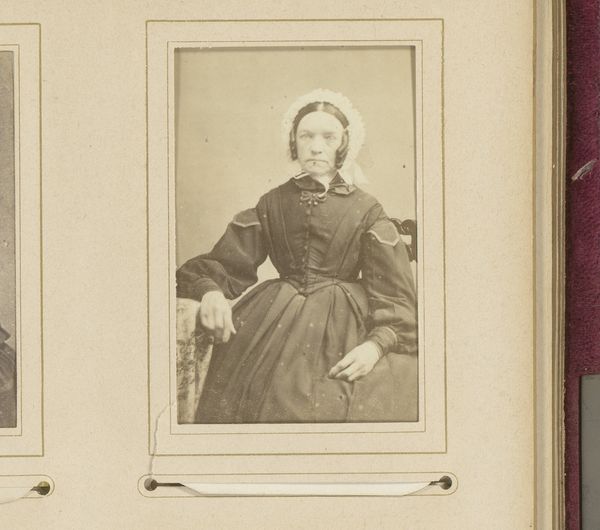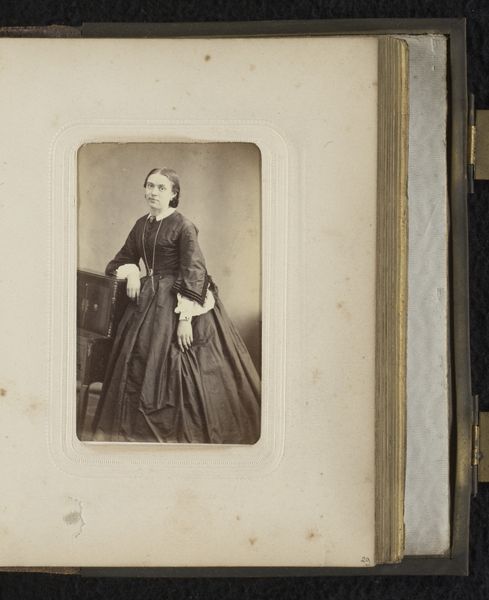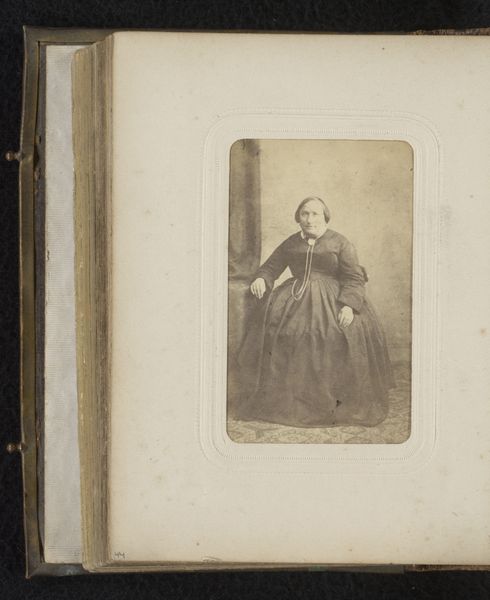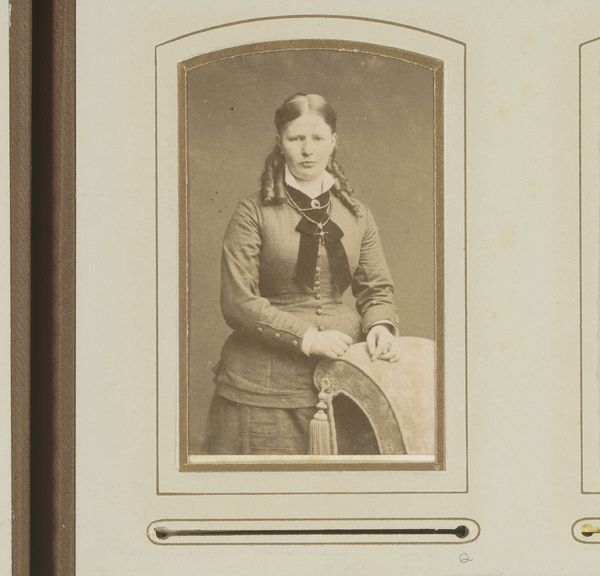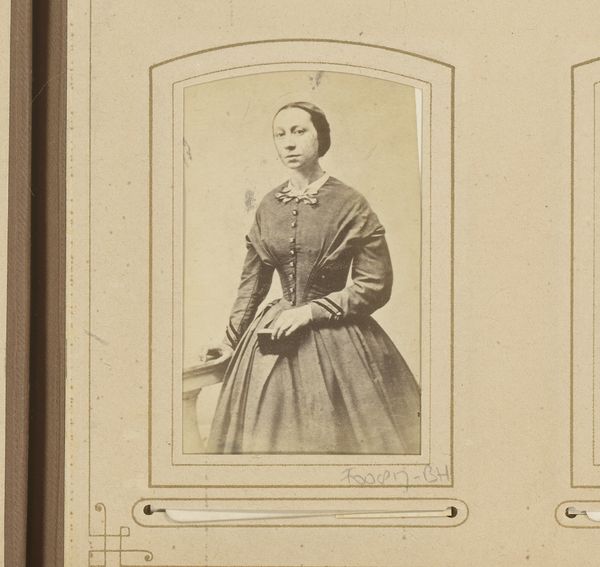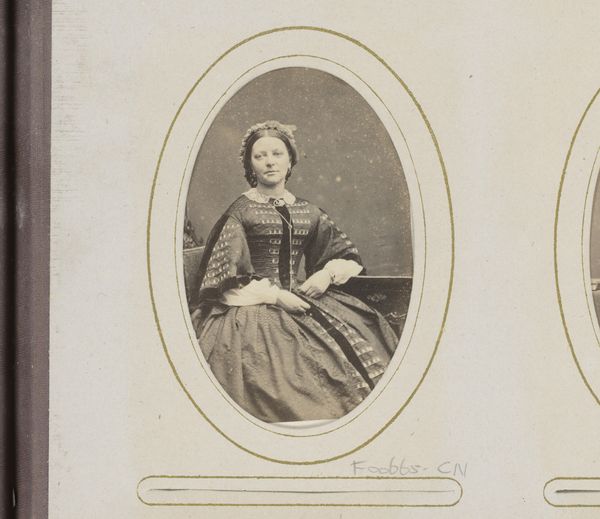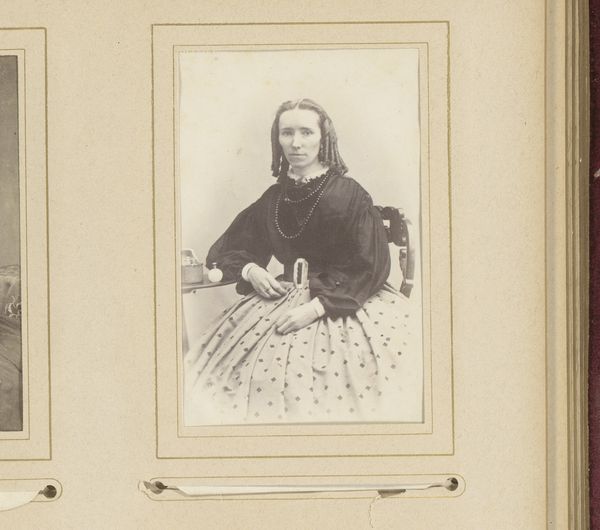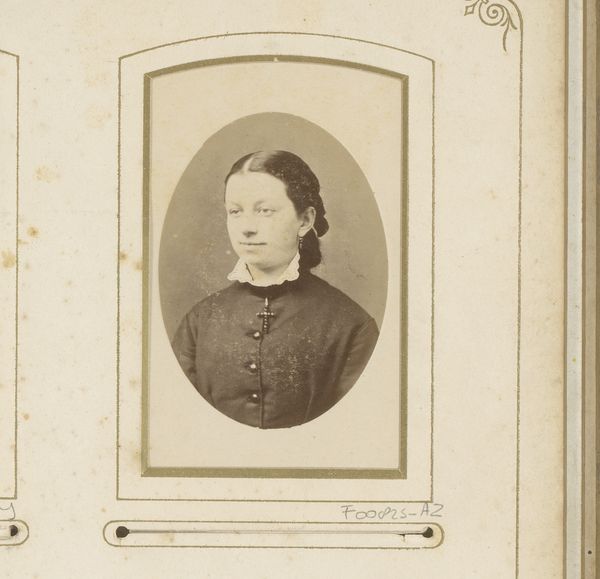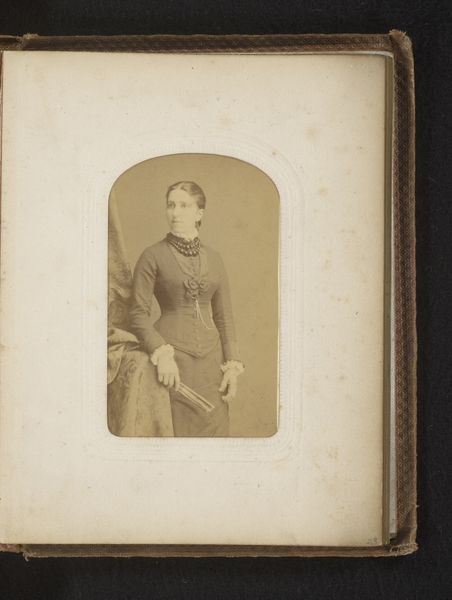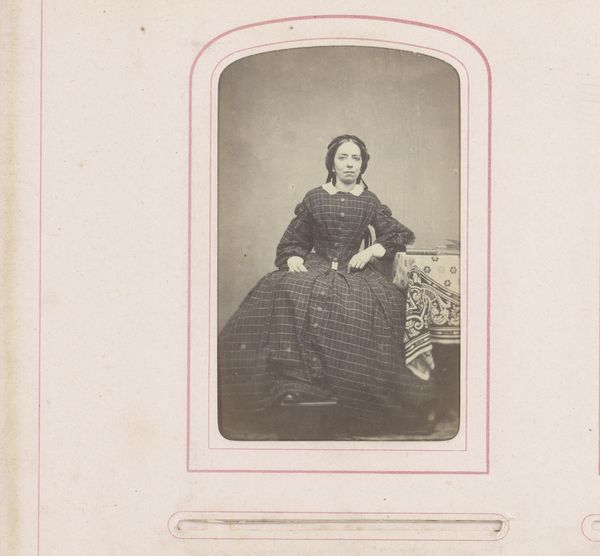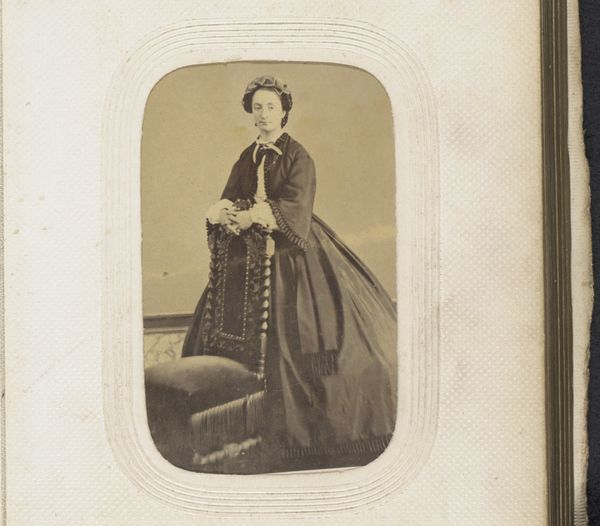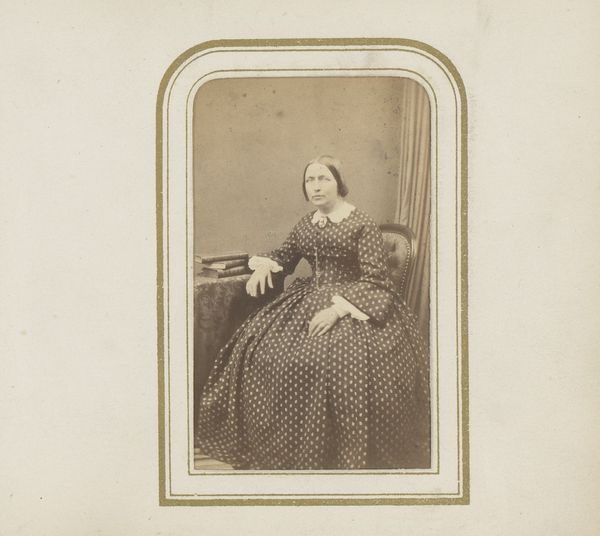
photography, gelatin-silver-print
#
portrait
#
photography
#
historical photography
#
gelatin-silver-print
#
genre-painting
#
history-painting
Dimensions: height 81 mm, width 52 mm
Copyright: Rijks Museum: Open Domain
Curator: Albert Greiner, a name perhaps less familiar than other nineteenth-century photographers, made this gelatin-silver print between 1861 and 1887. It's titled, rather simply, "Portrait of a Woman with Long Necklace," and it resides here at the Rijksmuseum. Editor: My first impression is…reserved. The sepia tones contribute to an overall feeling of stillness, even melancholy. She's posed formally, but her gaze seems to hint at something more complex. Curator: Absolutely. These portraits offer a window into the past, particularly regarding gender and societal expectations. Women of this era were often constrained by social norms, their identities largely defined by their roles within the family. A portrait became a symbol of status, but also an expression, albeit controlled, of individuality. Editor: I’m interested in her attire. While it signifies a certain social standing, her posture, with hands gently clasped on the table, strikes me as less about overt display and more about quiet confidence. I wonder what sort of challenges she would have faced navigating a patriarchal society. Curator: Photography was still a relatively new medium during this period. These portraits often acted as social documents, reinforcing existing hierarchies and ideals of beauty and propriety. Think about how crucial dress codes, posing and setting were in constructing a particular identity or aspiration. The politics of representation are at play, and her relative lack of adornment could be interpreted as either subversive, rebellious, or rather simple humility. Editor: It raises so many questions. The slight asymmetry in her hairstyle and dress almost disrupts that polished finish. Were these attempts to project some autonomy and resist standardization in her representation? What was the function of the necklace? The length definitely makes a statement. Curator: Exactly! By questioning these details and the image as a whole, we encourage a broader understanding of art and its capacity to either perpetuate norms or act as resistance to them. The way she uses the prop of the table makes it more informal and intimate than cold or distant. Editor: These kinds of historical pieces offer a chance to confront our contemporary notions of identity, particularly in our own visually saturated era. The nuances embedded in these photographic decisions resonate with us today. Curator: Indeed. It reminds us that art never exists in a vacuum; it is constantly interacting with cultural norms, social issues, and changing times. Editor: That tension is perhaps what makes it such an arresting piece even now. Thanks for sharing your historical insight.
Comments
No comments
Be the first to comment and join the conversation on the ultimate creative platform.
